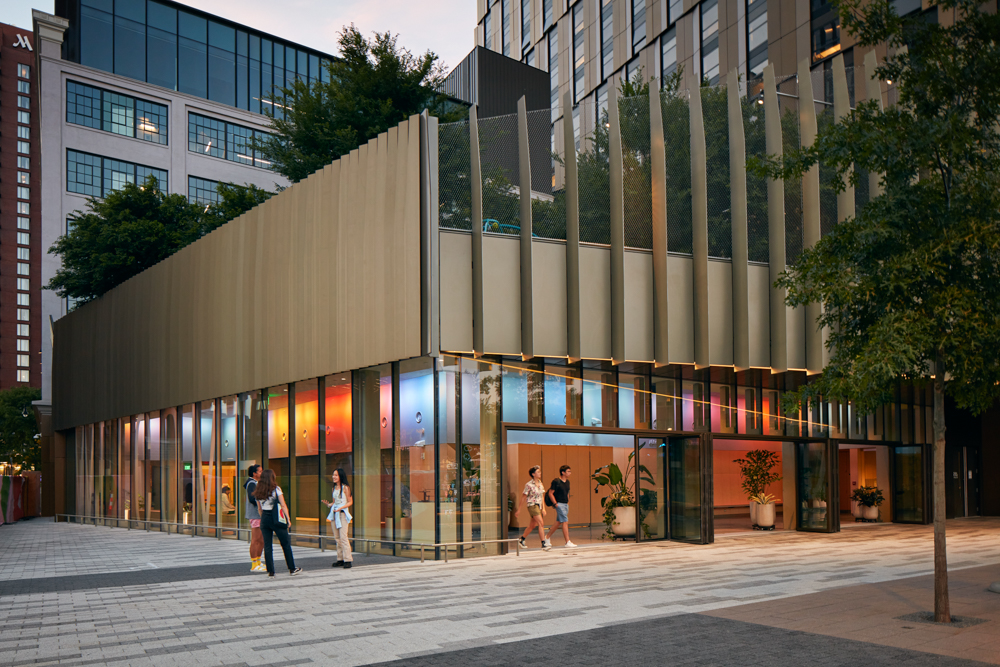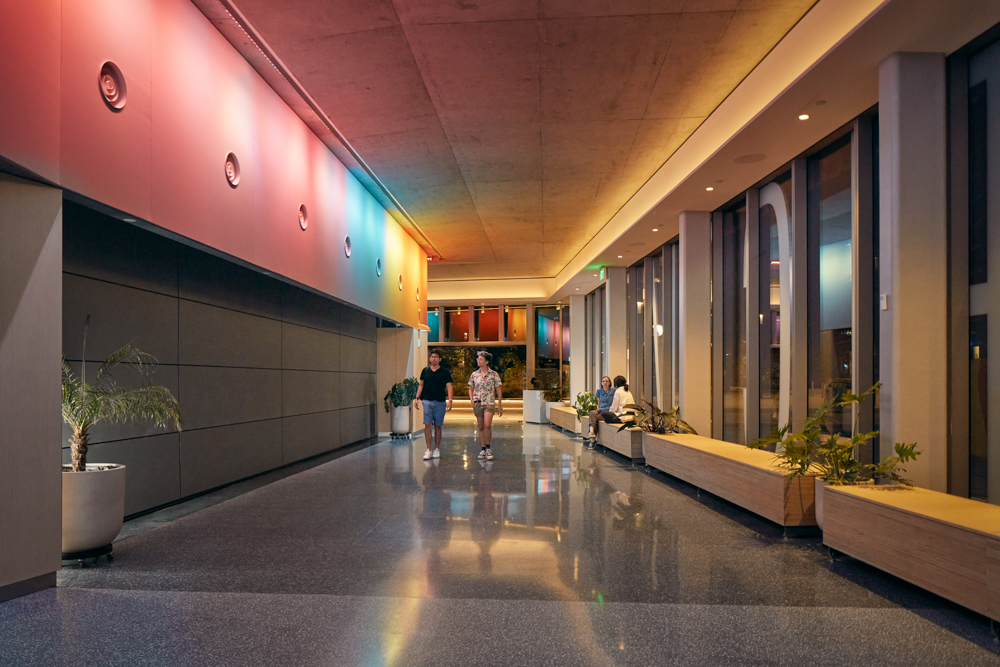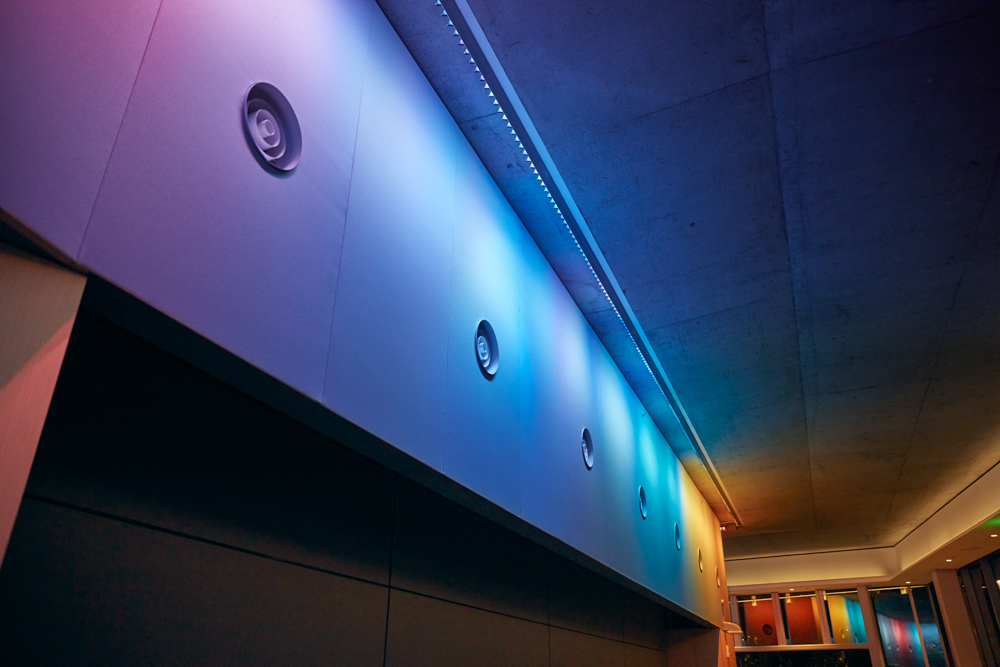Hello!
Welcome!
This is the learning guide for MIT Illuminations, an ongoing experiment in creative computation at the MIT Welcome Center located in Kendall Square.
The lights dynamically illuminating the Welcome Center are, like the MIT community, colorful, ever-changing, and alive. They're inspired by a long history of the MIT community deploying creative installations of colorful lights in dormitories, on bridges and buildings, and around campus. Meanwhile, the software driving the lights is published under the open-source MIT license, so anyone in the world can learn how to make their own.
What is Learn.Illuminations?
We'll walk you through how to build your own version of MIT Illuminations at home, by using an open-source microcontroller called an Arduino to communicate with a strip of individually addressable LED lights. If you don't know what that means - don't worry! This guide is designed for a wide audience, from beginners with no electronics experience to veterans who have prototyped digital devices before. If you're not interested in learning all the nitty-gritty details of electronics, feel free to
If you're not interested in learning all the nitty gritty details of electronics, feel free to jump straight to the Illuminations App!
How do I use this guide?
The goal of Learn.Illuminations is to give you an introduction to the science and language of light installations, and to explain how MIT Illuminations works. These fundamentals will hopefully help you build your online search intuition and open the door for you to explore further.
The content in this guide is split up into multiple chapters, with labels that indicate what each chapter is about.
| Arduino • If you see this icon, this means the chapter will contain information on working with an Arduino. Information on the next page will give you a sense of how to procure some of these materials. | |
| MIT Illuminations Application • This icon means we'll be using the MIT Illuminations App to simulate/control lights! This is the same app used to control Illuminations in the welcome center. |
If you're interested in building your own blinky lights at home, Chapter 3. Intro to Arduino! contains a list of recommended components!
How does this guide differ from the thousands of other guides out there?
We're glad you asked! These 13 chapters build to an end goal of understanding and working with the MIT Illuminations lights. This means that there will be a heavier focus on lighting and controlling lights within one particular app. While there is a chapter on basic electronics, we won't focus as heavily on the math, nor other common electrical components. This doesn't mean they're not important! We hope that this guide serves as a starting point for you to explore the world of electronics and lighting!
Additional Information
Want to dive deeper into any of the materials in this guide? There are a couple of resources we recommend:
- AdaFruit is an open-source hardware company based in New York City that sells great, reliable, beginner-electronic friendly parts. It also has great tutorials and guides.
- Instructables is a website specializing in user-created and -uploaded do-it-yourself projects
This guide is also open source and found on GitHub here. If you spot anything wrong, feel free to leave an issue. If you want to contribute, feel free to submit a pull request! We're excited to help everyone in the world build more awesome blinky lights.


